-
 Bitcoin
Bitcoin $79,866.4157
3.46% -
 Ethereum
Ethereum $1,516.7371
2.07% -
 Tether USDt
Tether USDt $0.9995
0.03% -
 XRP
XRP $1.9526
6.52% -
 BNB
BNB $570.7416
1.64% -
 USDC
USDC $1.0000
0.01% -
 Solana
Solana $110.6929
3.94% -
 Dogecoin
Dogecoin $0.1516
3.64% -
 TRON
TRON $0.2361
2.49% -
 Cardano
Cardano $0.5976
4.60% -
 UNUS SED LEO
UNUS SED LEO $9.4402
3.07% -
 Chainlink
Chainlink $11.9969
5.26% -
 Avalanche
Avalanche $17.8225
5.95% -
 Toncoin
Toncoin $2.9006
-4.30% -
 Hedera
Hedera $0.1690
13.06% -
 Stellar
Stellar $0.2289
3.71% -
 Shiba Inu
Shiba Inu $0.0...01166
5.60% -
 Sui
Sui $2.0899
7.39% -
 MANTRA
MANTRA $6.3446
1.25% -
 Bitcoin Cash
Bitcoin Cash $287.6186
4.78% -
 Litecoin
Litecoin $72.3804
1.20% -
 Polkadot
Polkadot $3.4315
1.42% -
 Dai
Dai $1.0000
0.01% -
 Bitget Token
Bitget Token $4.2096
3.70% -
 Ethena USDe
Ethena USDe $0.9987
0.02% -
 Hyperliquid
Hyperliquid $13.5909
6.07% -
 Pi
Pi $0.5799
0.86% -
 Monero
Monero $200.2463
2.62% -
 Uniswap
Uniswap $4.9811
2.14% -
 OKB
OKB $51.3972
-1.16%
What is a DAG?
DAGs in cryptocurrencies offer faster transaction processing and scalability, differing from blockchains by using an interconnected network of nodes.
Apr 07, 2025 at 08:15 pm
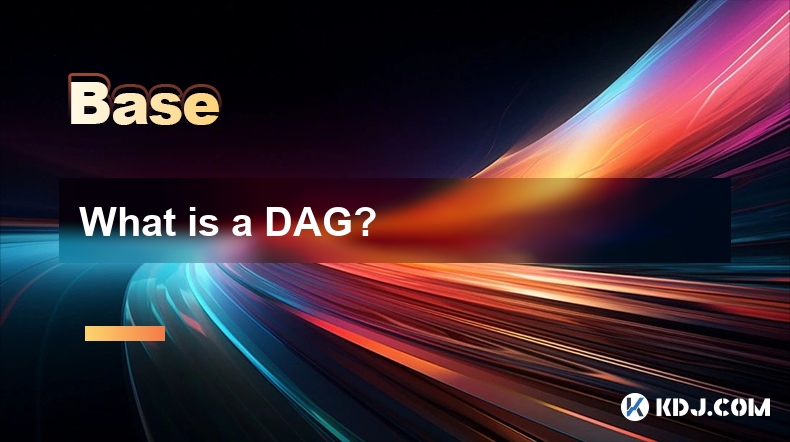
A Directed Acyclic Graph, commonly known as a DAG, is a fundamental concept in the world of cryptocurrencies and blockchain technology. Unlike traditional blockchain structures that rely on a linear chain of blocks, a DAG uses a more complex and interconnected network of nodes. This structure allows for faster transaction processing and scalability, making it an attractive alternative for many cryptocurrency projects.
What Makes a DAG Different from a Blockchain?
The primary difference between a DAG and a traditional blockchain lies in their structure and functionality. A blockchain is a linear sequence of blocks, where each block contains a list of transactions and is linked to the previous block through cryptographic hashes. In contrast, a DAG is a network of nodes where each node can have multiple parents and children, creating a more flexible and interconnected structure.
In a DAG, transactions are directly linked to one another, forming a web-like structure. This allows for parallel processing of transactions, which can significantly increase the throughput and scalability of the network. Additionally, DAGs often do not require miners or validators to confirm transactions, which can reduce the energy consumption and costs associated with maintaining the network.
How Does a DAG Work?
To understand how a DAG works, it's essential to grasp the concept of nodes and edges. In a DAG, each node represents a transaction, and edges represent the relationships between these transactions. When a new transaction is added to the network, it must reference at least one previous transaction, creating a new node and edge in the graph.
The process of adding a new transaction to a DAG typically involves the following steps:
- Transaction Creation: A user initiates a transaction, specifying the recipient and the amount.
- Transaction Validation: The transaction is validated by the network, often through a consensus mechanism that does not require mining.
- Linking to Previous Transactions: The new transaction is linked to one or more previous transactions, creating a new node and edge in the DAG.
- Network Propagation: The new transaction is broadcast to the network, where it is verified and added to the DAG.
This process allows for a more decentralized and efficient way of processing transactions, as multiple transactions can be processed simultaneously without the need for a central authority.
Examples of DAG-Based Cryptocurrencies
Several cryptocurrencies have adopted the DAG structure to improve their scalability and efficiency. Some notable examples include:
- IOTA: IOTA uses a DAG called the Tangle to facilitate feeless microtransactions and machine-to-machine payments. In the Tangle, each new transaction must approve two previous transactions, creating a web of interconnected transactions.
- Nano: Nano, formerly known as RaiBlocks, uses a DAG to enable instant and fee-free transactions. Each account in the Nano network has its own blockchain, and these blockchains are interconnected to form a DAG.
- Byteball: Byteball uses a DAG to create a decentralized database that can store and transfer value. Transactions in Byteball are linked to previous transactions, forming a DAG that allows for fast and secure data storage.
Advantages of Using a DAG
The use of a DAG in cryptocurrency networks offers several advantages over traditional blockchains. Some of the key benefits include:
- Scalability: DAGs can process multiple transactions in parallel, allowing for higher transaction throughput and better scalability.
- Faster Transaction Confirmation: Without the need for mining or block creation, transactions in a DAG can be confirmed more quickly.
- Lower Costs: DAGs often do not require miners or validators, which can reduce the energy consumption and costs associated with maintaining the network.
- Decentralization: The interconnected nature of a DAG can lead to a more decentralized network, as there is no need for a central authority to validate transactions.
Challenges and Considerations
While DAGs offer many advantages, they also come with their own set of challenges and considerations. Some of the key issues include:
- Security: The security of a DAG can be more complex to ensure, as the interconnected nature of the network can make it vulnerable to certain types of attacks.
- Consensus Mechanisms: DAGs often use different consensus mechanisms than traditional blockchains, which can be more challenging to implement and maintain.
- Adoption: Despite the potential benefits, DAGs are still a relatively new technology, and their adoption in the cryptocurrency space is still growing.
How to Implement a DAG in a Cryptocurrency Project
Implementing a DAG in a cryptocurrency project involves several key steps and considerations. Here is a detailed guide on how to do so:
- Define the Transaction Structure: Determine the structure of the transactions in your DAG. Each transaction should include essential information such as the sender, recipient, amount, and any other relevant data.
- Choose a Consensus Mechanism: Select a consensus mechanism that is suitable for your DAG. Common options include Proof of Work (PoW), Proof of Stake (PoS), or a custom consensus mechanism designed specifically for DAGs.
- Develop the Network Protocol: Create a network protocol that allows nodes to communicate and validate transactions. This protocol should define how transactions are broadcast, validated, and added to the DAG.
- Implement Transaction Validation: Develop a system for validating transactions within the DAG. This may involve checking the validity of the transaction data, ensuring that the sender has the necessary funds, and verifying the links to previous transactions.
- Create a User Interface: Design a user interface that allows users to interact with the DAG. This interface should enable users to create and send transactions, view their transaction history, and monitor the status of the network.
- Test and Deploy the Network: Thoroughly test the DAG network to ensure that it functions as intended. Once testing is complete, deploy the network and make it available to users.
Frequently Asked Questions
Q: Can a DAG be used in conjunction with a traditional blockchain?
A: Yes, some projects have explored hybrid models that combine the benefits of both DAGs and traditional blockchains. For example, a DAG could be used for fast and scalable transaction processing, while a blockchain could be used for more secure and immutable data storage.
Q: How does a DAG handle double-spending attacks?
A: DAGs typically use consensus mechanisms and validation processes to prevent double-spending attacks. For example, in IOTA's Tangle, each new transaction must approve two previous transactions, making it difficult for an attacker to double-spend without being detected.
Q: Are there any privacy concerns associated with using a DAG?
A: Privacy concerns in DAGs can vary depending on the specific implementation. Some DAGs may offer enhanced privacy features, such as zero-knowledge proofs or ring signatures, while others may be more transparent. It's essential to consider the privacy features of a DAG when evaluating its suitability for a particular use case.
Q: How can developers contribute to the development of a DAG-based cryptocurrency?
A: Developers can contribute to DAG-based cryptocurrencies by participating in open-source projects, contributing code, and helping to improve the network's scalability and security. Additionally, developers can create tools and applications that leverage the unique features of DAGs, such as fast transaction processing and low fees.
Disclaimer:info@kdj.com
The information provided is not trading advice. kdj.com does not assume any responsibility for any investments made based on the information provided in this article. Cryptocurrencies are highly volatile and it is highly recommended that you invest with caution after thorough research!
If you believe that the content used on this website infringes your copyright, please contact us immediately (info@kdj.com) and we will delete it promptly.
- The crypto market has rallied broadly, Thursday, thanks to two big updates
- 2025-04-10 23:35:12
- As DOGE and SHIB lose steam, Codename:Pepe is rising with AI-powered precision to lead the next memecoin wave.
- 2025-04-10 23:35:12
- Bitcoin wasn't supposed to just sit still.
- 2025-04-10 23:30:13
- Cardano Among Top Gainers as Tariff War Takes a Pause
- 2025-04-10 23:30:13
- It's safe to say that Bitcoin (BTC) is entering bear market territory
- 2025-04-10 23:25:14
- Although we saw a writing XRP price crash on Monday, April 7, today this token is retaking the post-crash price levels
- 2025-04-10 23:25:14
Related knowledge
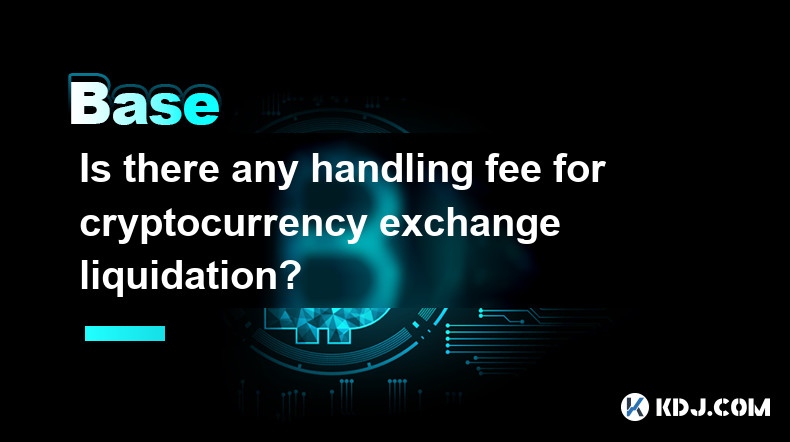
Is there any handling fee for cryptocurrency exchange liquidation?
Apr 10,2025 at 04:29pm
When trading contracts on cryptocurrency exchanges, liquidation is a word that scares investors. A liquidation means that the investor has lost all its principal. So, will the exchange still charge a handling fee when the liquidation is liquidated? This is a concern for many investors. This article will give a detailed answer to this. Important statemen...
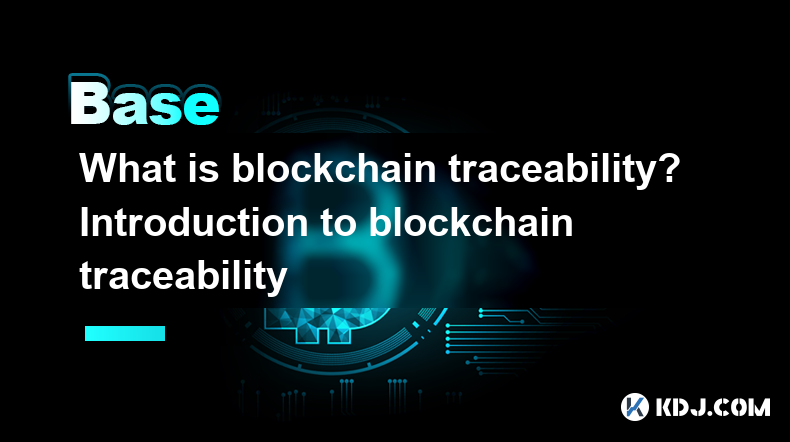
What is blockchain traceability? Introduction to blockchain traceability
Apr 10,2025 at 11:35pm
Blockchain traceability is a technical means that uses blockchain technology to track and record the source and circulation of goods or information. Here is a detailed introduction to it: principleA blockchain consists of multiple blocks, each block containing specific transaction information. In traceability applications, each key link of the product o...
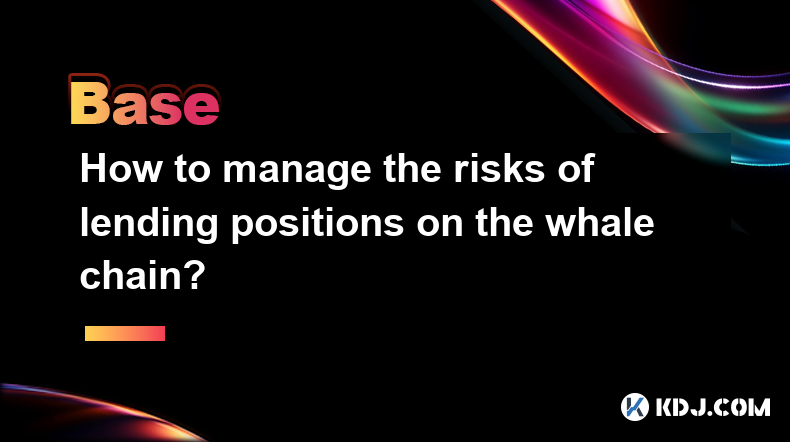
How to manage the risks of lending positions on the whale chain?
Apr 09,2025 at 10:50pm
To manage the risks of lending positions on the whale chain, we need to start from the following aspects: 1. Reasonable control of positions and leverage:Determine the appropriate lending scale and leverage multiple based on your own risk tolerance to avoid excessive leverage. For example, if whales do not have a particularly strong grasp of the market ...
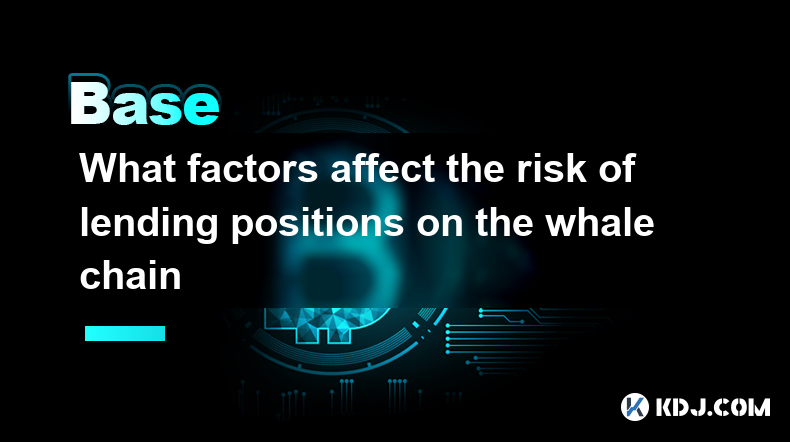
What factors affect the risk of lending positions on the whale chain
Apr 10,2025 at 12:35am
Here are some factors that will affect the risk of lending positions on the whale chain: 1. Market price fluctuations:The decline in collateral prices will cause the collateral value to shrink and may trigger liquidation. For example, a whale borrowed 75.69 million DAI with 60,810 ETH. When the price of ETH falls, its position health will drop sharply a...
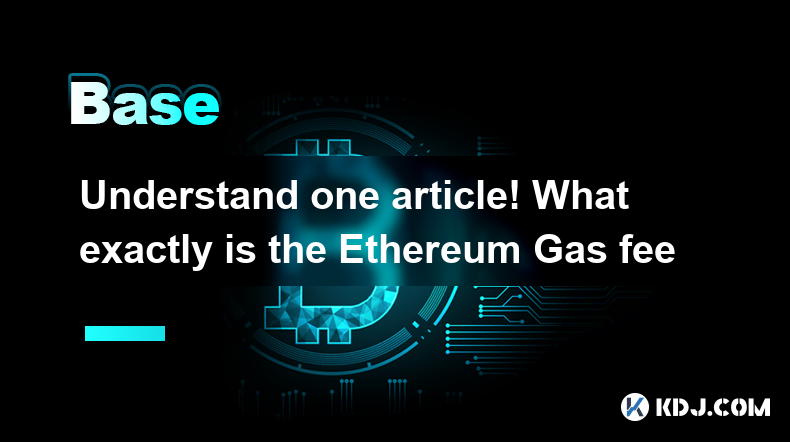
Understand one article! What exactly is the Ethereum Gas fee
Apr 10,2025 at 03:21am
The Ethereum Gas fee refers to the fees paid when trading or executing smart contracts on the Ethereum blockchain, which is used to compensate miners for the computing resources consumed by verifying and packaging exchanges. Here is a detailed introduction to it: Gas concept Gas can be regarded as the “fuel” in the Ethereum network. Ethereum is regarded...
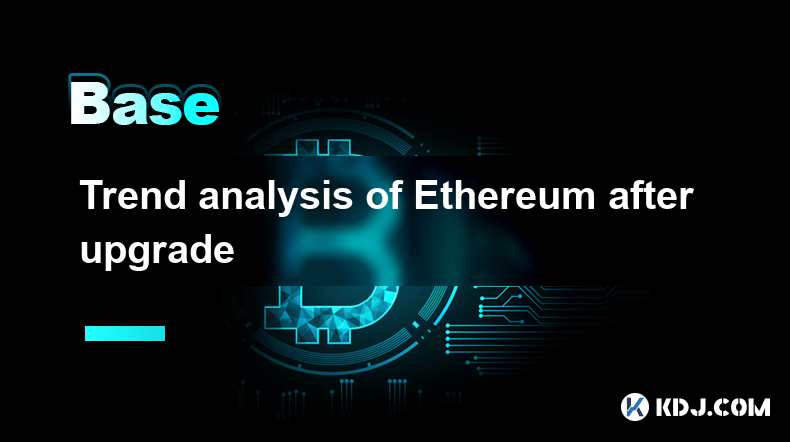
Trend analysis of Ethereum after upgrade
Apr 10,2025 at 04:01am
As a pioneer in blockchain technology, Ethereum has a profound impact on the entire digital asset field every upgrade. Accurately predicting upgraded market trends is crucial for investors and developers. This article will explore in-depth various trends that may appear after the upgrade of Ethereum, helping you grasp the pulse of the market and underst...

Is there any handling fee for cryptocurrency exchange liquidation?
Apr 10,2025 at 04:29pm
When trading contracts on cryptocurrency exchanges, liquidation is a word that scares investors. A liquidation means that the investor has lost all its principal. So, will the exchange still charge a handling fee when the liquidation is liquidated? This is a concern for many investors. This article will give a detailed answer to this. Important statemen...

What is blockchain traceability? Introduction to blockchain traceability
Apr 10,2025 at 11:35pm
Blockchain traceability is a technical means that uses blockchain technology to track and record the source and circulation of goods or information. Here is a detailed introduction to it: principleA blockchain consists of multiple blocks, each block containing specific transaction information. In traceability applications, each key link of the product o...

How to manage the risks of lending positions on the whale chain?
Apr 09,2025 at 10:50pm
To manage the risks of lending positions on the whale chain, we need to start from the following aspects: 1. Reasonable control of positions and leverage:Determine the appropriate lending scale and leverage multiple based on your own risk tolerance to avoid excessive leverage. For example, if whales do not have a particularly strong grasp of the market ...

What factors affect the risk of lending positions on the whale chain
Apr 10,2025 at 12:35am
Here are some factors that will affect the risk of lending positions on the whale chain: 1. Market price fluctuations:The decline in collateral prices will cause the collateral value to shrink and may trigger liquidation. For example, a whale borrowed 75.69 million DAI with 60,810 ETH. When the price of ETH falls, its position health will drop sharply a...

Understand one article! What exactly is the Ethereum Gas fee
Apr 10,2025 at 03:21am
The Ethereum Gas fee refers to the fees paid when trading or executing smart contracts on the Ethereum blockchain, which is used to compensate miners for the computing resources consumed by verifying and packaging exchanges. Here is a detailed introduction to it: Gas concept Gas can be regarded as the “fuel” in the Ethereum network. Ethereum is regarded...

Trend analysis of Ethereum after upgrade
Apr 10,2025 at 04:01am
As a pioneer in blockchain technology, Ethereum has a profound impact on the entire digital asset field every upgrade. Accurately predicting upgraded market trends is crucial for investors and developers. This article will explore in-depth various trends that may appear after the upgrade of Ethereum, helping you grasp the pulse of the market and underst...
See all articles




















![🐢Super Mario World Koopa Troopa 100% 96⭐️ + Coin [Ao Vivo] 🐢Super Mario World Koopa Troopa 100% 96⭐️ + Coin [Ao Vivo]](/uploads/2025/04/10/cryptocurrencies-news/videos/super-mario-koopa-troopa-coin-ao-vivo/image-1.webp)


































































